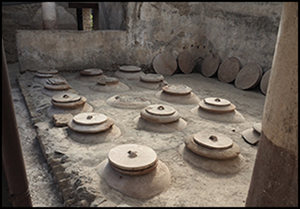Article contents
Making wine in earthenware vessels: a comparative approach to Roman vinification
Published online by Cambridge University Press: 23 January 2024
Abstract

Wine was deeply embedded in all aspects of Roman life and its role in society, culture and the economy has been much studied. Ancient Roman texts and archaeological research provide valuable insights into viticulture and the manufacture, trade and consumption of wine but little is known of the sensory nature of this prized commodity. Here, the authors offer a novel oenological approach to the study of Roman dolia through their comparison with modern Georgian qvevri and associated wine-production techniques. Far from being mundane storage vessels, dolia were precisely engineered containers whose composition, size and shape all contributed to the successful production of diverse wines with specific organoleptic characteristics.
- Type
- Research Article
- Information
- Copyright
- Copyright © The Author(s), 2024. Published by Cambridge University Press on behalf of Antiquity Publications Ltd
References
- 3
- Cited by


